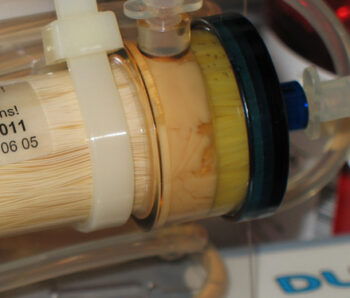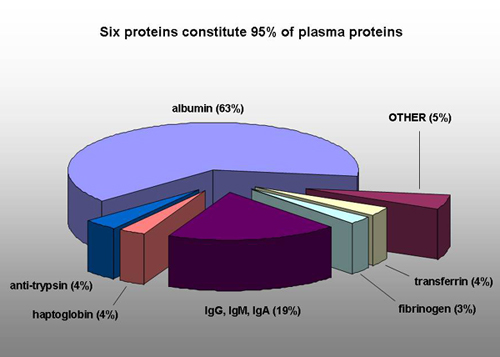
- FiberCell Systems C2003 Cartridge Data Sheet
- FiberCell Systems C2008 Cartridge Data Sheet
- FiberCell Systems C2018 Cartridge Data Sheet
- FiberCell Systems C2011 Cartridge Data Sheet
- FiberCell Systems C2025 Cartridge Data Sheet
- FiberCell Systems C2025D Cartridge Data Sheet
- FiberCell Systems C7025 Cartridge Data Sheet
- FiberCell Systems C8008 Cartridge Data Sheet
- Poster: FiberCell Systems ISEV 2022 – Retroviral Transduction and Production of Palm-GRET Labelled Extracellular Vesicles using Bone Marrow Derived MSC in a Hollow Fiber Bioreactor
- Poster: FiberCell Systems ISEV 2022 – Scalability of Production and Bio-Activity of Amniotic Fluid Stem Cell Extracellular Vesicles from 3-D Hollow Fiber Bioreactor and 2-D Culture
- Poster: FiberCell Systems ISEV 2020 – Amniotic stem cell EVs produced in a 3-D hollow fiber bioreactor have enhanced bioactivity when compared to 2-D petri dish EVs, with yields that can support clinical applications in a cGMP-compatible system
- Webinar: Beyond 3-D: Recapitulating Nature for Optimal Bioproduction – Also see PPT file
- Presentation: FiberCell Systems Technical Presentation 2017
- Presentation: FiberCell Systems – Hollow Fiber Bioreactors
- Presentation: FiberCell Systems – Hollow Fiber Infection Model for Antibiotic PK/PD
- Presentation: FiberCell Systems – Production of Exosomes and Culture of Stem Cells in Hollow Fiber Bioreactors
- Poster: FiberCell Systems – Continuous Collection of Stem Cells from a Human Placenta Perfusion Co-Culture
- Poster: ZenBio – Scalable production of exosomes and their potential use as a therapeutic for tendinopathy
- Poster: FiberCell Systems ISEV 2016 – Large Scale Production of Extracellular Vesicles in a Hollow Fiber Bioreactor System
- Poster: FiberCell Systems ISEV 2017 – Clinical Scale Production and Wound Healing Activity of Human Adipose-Derived Mesenchymal Stem Cell Extracellular Vesicles from a Hollow Fiber Bioreactor
- Presentation: “3-D Hollow Fiber Bioreactors, a Better Way to Grow Cells” presentation from the 2023 CellMe Berlin-International Forum on Cell Manufacturing and Engineering
- Oligodendroglia-derived extracellular vesicles activate autophagy via LC3B/BAG3 to protect against oxidative stress with an enhanced efect for HSPB8 enriched vesicles
- Pharmacodynamic Evaluation of Zoliflodacin Treatment of Neisseria gonorrhoeae Strains With Amino Acid Substitutions in the Zoliflodacin Target GyrB Using a Dynamic Hollow Fiber Infection Model
- Electrodeposited Magnetic Nanoporous Membrane (MNM) with a Multi-Edge Superparamagnetic Heterogeneous Wedge Junction for High-Yield and High-Throughput Immunocapture of Specimen
- Rifampin Pharmacokinetics/Pharmacodynamics in the Hollow- Fiber Model of Mycobacterium kansasii Infection
- Mesenchymal Stromal Cell Bioreactor for Ex Vivo Reprogramming of Human Immune Cells
- Hollow Fiber Bioreactor Protocol for Mesenchymal Stem Cells
- Improving the Drug Development Pipeline for Mycobacteria: Modelling Antibiotic Exposure in the Hollow Fibre Infection Model
- Hollow fiber bioreactor production of extracellular vesicles from human bone marrow mesenchymal stromal cells yields nanovesicles that mirrors the immunomodulatory antigenic signature of the producer cell
- Rational Design for Controlled Release of Dicer-substrate SiRNA Harbored in phi29 pRNA-based Nanoparticles
- Standard therapy of MAC pulmonary disease shows limited efficacy in HFIM
- Application of the Hollow Fibre Infection Model (HFIM) in Antimicrobial Development: A Systematic Review and Recommendations of Reporting
- Polymyxin B Pharmacodynamics in the Hollow Fiber Infection Model: What You See May Not Be What You Get
- Leveraging the Dynamic in Vitro Hollow Fiber Infection Model in Determining Optimal Clinical Dose of β-Lactam and β-Lactamase Inhibitor Combinations
- Hollow-fiber bioreactor production of extracellular vesicles from human bone marrow mesenchymal stromal cells yields nanovesicles that mirrors the immunomodulatory antigenic signature of the producer cell
- FiberCell Systems Bioreactor Harvesting EVs from Cells in Continuous High-Density Culture
- Determining the optimal dosing of a novel combination regimen of ceftazidime/avibactam with aztreonam against NDM-1-producing Enterobacteriaceae using a hollow-fibre infection model
- Osteosarcoma-Derived Extracellular Vesicles Induce Lung Fibroblast Reprogramming
- Pharmacodynamic evaluation of plasma and epithelial lining fluid exposures of amikacin against Pseudomonas aeruginosa in a dynamic in vitro hollow-fibre infection model
- Immunization with Human Cytomegalovirus Core Fusion Machinery and Accessory Envelope Proteins Elicit Strong Synergistic Neutralizing Activities
- Reference List Sorted by Drug Organism and Cartridge
- Pump Settings for in-vitro Hollow-fiber Experiments
- Hollow Fiber System of Tuberculosis Laboratory Manual
- Mimicking in-vivo Exposures to Drug Combinations In-vitro: Anti-tuberculosis Drugs in Lung Lesions and the Hollow Fiber Model of Infection
- Hypoxia-induced Tumor Exosomes Promote M2-like Macrophage Polarization of Infiltrating Myeloid Cells and MicroRNA-mediated Metabolic Shift
- Comparison of in vitro static and dynamic assays to evaluate the efficacy of an antimicrobial drug combination against Staphylococcus aureus
- Babesia bigemina: Advances in continuous in vitro culture using serum-free medium supplemented with insulin, transferrin, selenite, and putrescine
- Stem Cell Health and Tissue Regeneration in Microgravity
- Space Tissue Loss – Stem Cell Regeneration (STL-Regeneration)
- A Hollow-Fiber Infection Model to Evaluate the Prevention of On-Therapy Resistance of Neisseria gonorrhoeae to Gepotidacin
- Critical Path to Tuberculosis Drug Regimens: Global Collaboration to Accelerate Development of Novel Drug Regimens and Rapid Drug Susceptibility Tests for Tuberculosis
- Differential Activity of the Combination of Vancomycin and Amikacin on Planktonic vs. Biofilm-Growing Staphylococcus aureus Bacteria in a Hollow Fiber Infection Model
- An update on technical, interpretative and clinical relevance of antimicrobial synergy testing methodologies
- Novel Therapy Targeting the Cryptosporidium Virus
- Oseltamivir-zanamivir combination therapy suppresses drug-resistant H1N1 influenza A viruses in the hollow fiber infection model (HFIM) system
- Efficient production and enhanced tumor delivery of engineered extracellular vesicles
- Secretomic profiling of cells from hollow fiber bioreactor reveals PSMA3 as a potential cholangiocarcinoma biomarker
- Polymyxin Combinations Combat Escherichia coli Harboring mcr-1 and blaNDM-5: Preparation for a Postantibiotic Era
- Collection of in vivo-like liver cell secretome with alternative sample enrichment method using a hollow fiber bioreactor culture system combined with tangential flow filtration for secretomics analys
- Secretome analysis using a hollow fiber culture system for cancer biomarker discovery
- U.S. Secretary of Commerce Penny Pritzker Announces Biopharmaceutical Manufacturing Institute Joining Manufacturing USA Network
- Culture of Placental Derived Cells in a Hollow Fiber Bioreactor Cartridge
- A Development Paradigm for Novel Combination Regimens for Multidrug-Resistant and Drug-Susceptible Tuberculosis in Children
- Researchers Develop First-ever Tuberculosis Treatment for Children
- ISEV 2015 Exosome Production
- The Hollow Fiber Infection Model: Principles and Practice
- Continuous Production of Exosomes Utilizing the Technical Advantages of Hollow-Fiber Bioreactor Technology
- Simulated Antibiotic Exposures in an In Vitro Hollow-Fiber Infection Model
- Co-Culture of Stromal and Erythroleukemia Cells in a Perfused Hollow Fiber Bioreactor System
- Single-Use, Continuous Processing of Primary Stem Cells
- The Hollow Fiber Infection Model for Antimicrobial Pharmacodynamics and Pharmacokinetics
- Antiviral Pharmacodynamics in Hollow Fiber Bioreactors
- Isoniazid’s Bactericidal Activity Ceases
- Optimizing the culture of Plasmodium falciparum in hollow fiber bioreactors
- Insights into Egg Coat Assembly and Egg-Sperm Interaction from the X-Ray Structure of Full-Length ZP
- In vitro Toxicology and Hollow Fiber Bioreactors
- Considerations in Scale-Up of Viral Vaccine Production
- The Hollow Fiber Bioreactor and Cell Co-Cultivation
- Reference List Sorted by Drug Organism and Cartridge
- The Scientist: Production of Exosomes in a Hollow Fiber Bioreactor
- Culture of Placental Derived Cells in a Hollow Fiber Bioreactor Cartridge
- ISEV 2015 Exosome Production
- The Hollow Fiber Infection Model: Principles and Practice
- Continuous Culture of Cryptosporidium Parvum Using Hollow Fiber Technology
- Single-Use, Continuous Processing of Primary Stem Cells
- The Hollow Fiber Infection Model for Antimicrobial Pharmacodynamics and Pharmacokinetics
- In vitro Toxicology and Hollow Fiber Bioreactors
- The Hollow Fiber Bioreactor and Cell Co-Cultivation
- Production of Monoclonal Antibodies from Hybridomas in a Hollow Fiber Bioreactor
- FiberCell Systems 3-Dimensional Cell Culture in a Hollow Fiber Bioreactor
- Three-dimensional Cell-Based Assays in Hollow Fiber Bioreactors






